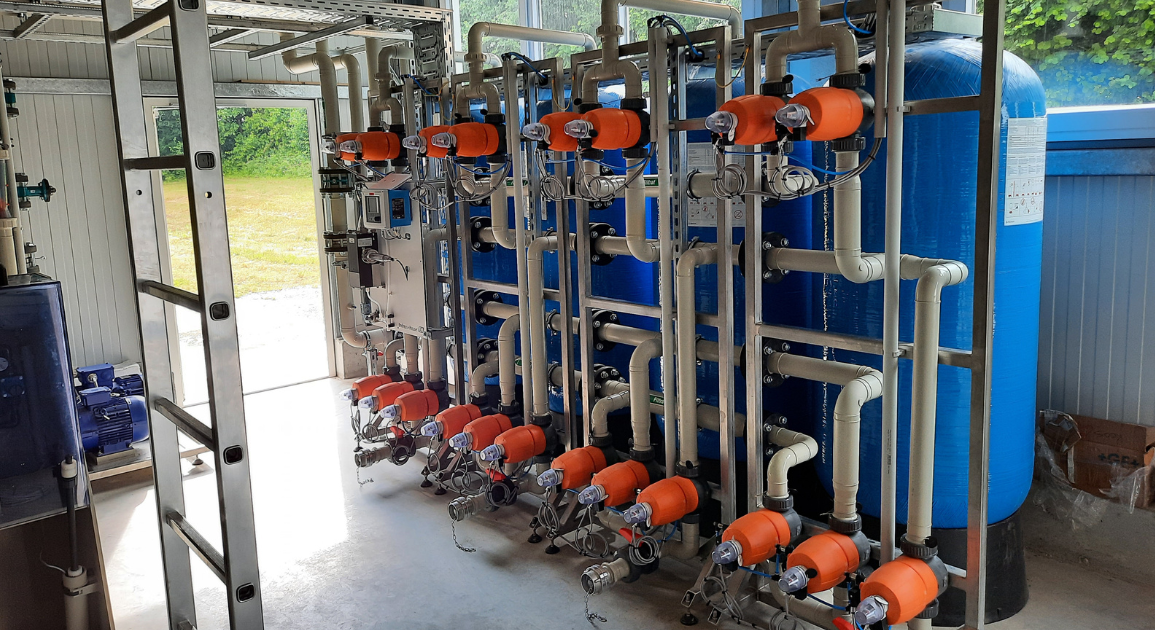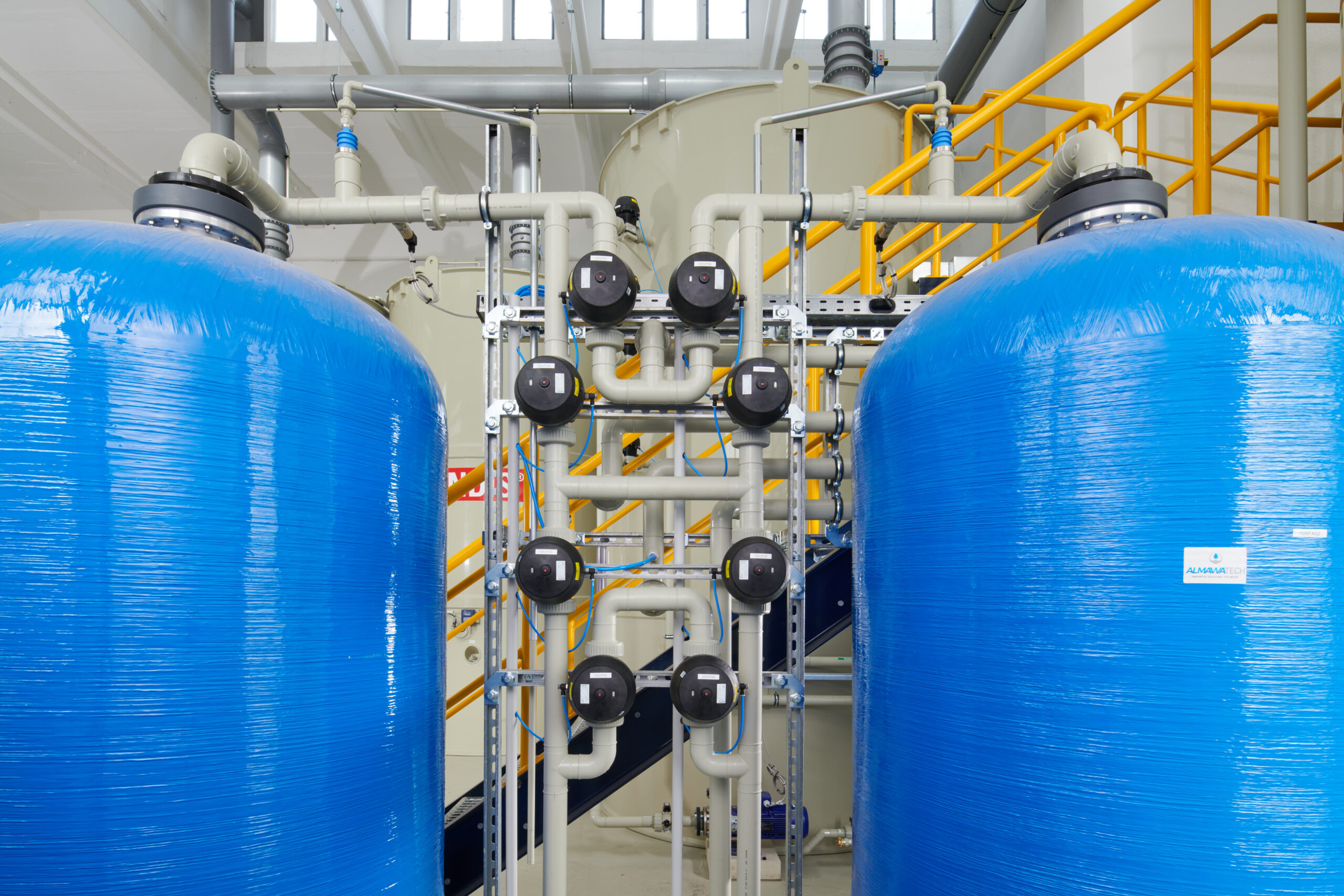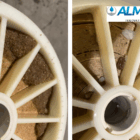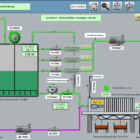Gravel filters are central components of mechanical water and wastewater treatment. They are used to remove suspended solids, particles and turbidity from water. The gravel filter works according to the principle of depth filtration: the water flows through a layered medium of gravel and quartz sand of different grain sizes. Dirt particles are trapped in the pores of the filter.
Table of contents
Structure and mode of operation
A gravel filter usually consists of the following components:
- Filter tanks: Usually made of steel or GRP, pressure- or gravity-operated depending on the application.
- Filter layers: The top layer consists of fine gravel, followed by coarser material and a carrier layer. The grain sizes vary from 0.4 to 8 mm.
- Filter nozzles: At the bottom of the filter, these prevent the filter material from being discharged while the cleaned water is drained off.

Photo: Our ALMA FIL multi-layer filters, which can also be operated with granulated activated carbon
Filtration process
The water is distributed evenly over the surface and passed through the filter bed. The depth filtration mechanism ensures that particles are separated throughout the filter medium. This increases the service life and filtration efficiency.
The filtration process comprises three main phases:
- Filtration: Removes particles such as sand, rust or organic substances.
- Backwashing: After a certain operating time, the filter is cleaned by reversing the water flow. This removes the particles collected in the gravel bed.
- Clear rinse: Removes residual contamination and prepares the filter for the next filtration cycle.
Applications
Gravel filters are widely used in various industries:
- Drinking water treatment: Removal of suspended solids and sediments.
- Wastewater treatment: Reduction of turbidity after biological or chemical treatment stages.
- Cooling water systems: Protection of downstream systems such as heat exchangers.
- Process water treatment & water recycling: Protection of membrane systems such as ultrafiltration or reverse osmosis against coarse impurities.

Photo: ALMA FIL gravel filtration system with H2O2 backwash system as a 2-way pendulum system
Advantages
- High filtration efficiency: Suitable for a wide range of particle sizes.
- Robustness and durability: low maintenance with regular backwashing.
- Flexibility: Can be operated as a single or multiple filter.
- Energy-efficient: Operation with minimal pressure loss.
Optimization and further developments
Combinations with other filtration systems, e.g. activated carbon or membrane filtration, can further increase cleaning performance. Automated control systems enable continuous monitoring and adjustment of operating parameters to maximize efficiency and service life.
ALMAWATECH solutions: ALMA FIL
ALMAWATECH offers tailor-made ALMA FIL gravel filter systems that are specially optimized for industrial applications. Our systems are characterized by their robust design, easy maintenance and efficient backwash systems.
For particularly demanding wastewater streams, we offer pilot tests to determine the ideal filter configuration and ensure optimum long-term operating costs.

Photo: ALMA FIL gravel filter as a police filter in the outlet of our ALMA CHEM MCW CP system
Conclusion
Gravel filters are a proven and versatile technology in water treatment. They enable the efficient removal of particles and suspended solids and often form the basis for further treatment processes. Through continuous further development and adaptation to specific requirements, gravel filters remain a central component of modern water and wastewater treatment systems.
For further information on our products, please feel free to contact us at any time!








